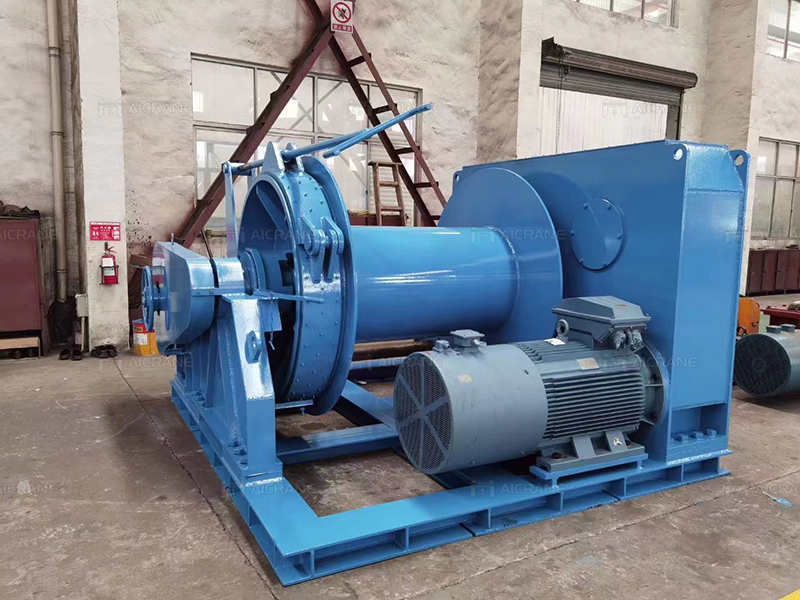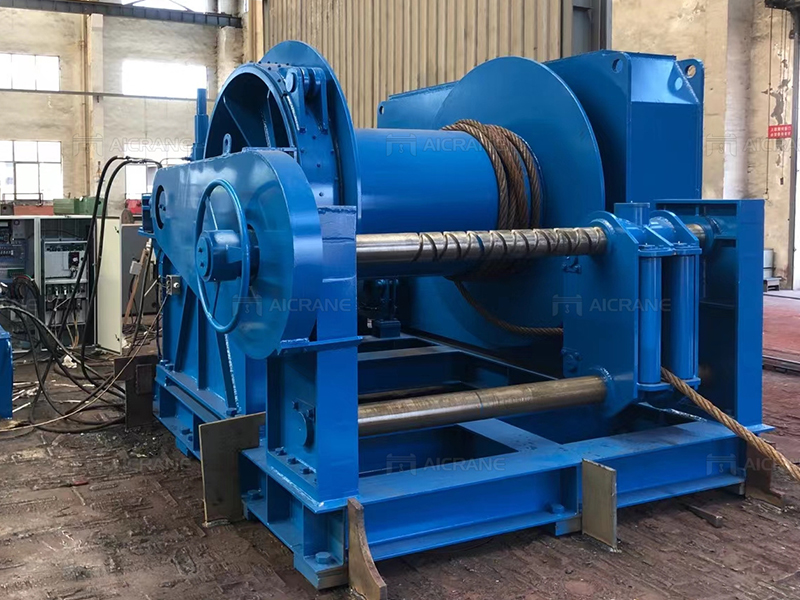Electric tugger winches have emerged as crucial tools in maritime applications, providing robust solutions for material handling and towing tasks in marine environments. As industries seek more sustainable practices, the use of electric tugger winches in marine settings has gained prominence. This article delves into the safety aspects of electric tugger winches used in maritime applications, examining the measures taken to ensure their secure and reliable operation.

I. Understanding Electric Tugger Winches in Maritime Settings:
Electric tugger winches in marine applications are specialized devices designed to handle material movement, towing, and other tasks on ships, docks, and offshore installations. Unlike traditional winches powered by internal combustion engines, these electric tugger winches rely on electric motors for their operation, offering advantages such as reduced emissions, lower maintenance costs, and enhanced control.
II. Safety Features and Marine Design:
The safety of electric tugger winches used in maritime applications hinges on their design and the incorporation of specific safety features tailored to the challenges of the marine environment. Some key safety features include:
Corrosion Resistance: Given the corrosive nature of marine environments, electric tugger winches are designed with materials and coatings that resist corrosion, ensuring the longevity and reliability of the equipment.
Waterproofing and Sealing: Electric tugger winches for marine use are equipped with waterproofing and sealing mechanisms to protect internal components from water ingress, safeguarding against potential electrical issues.
Emergency Stop Function: Similar to their industrial counterparts, these winches include emergency stop buttons for immediate halting of operations in case of emergencies, prioritizing the safety of personnel and equipment.
Load Monitoring and Control: Advanced load monitoring and control systems are integrated to ensure that the tugger winch operates within safe load limits, preventing overload situations that could compromise safety.

III. Compliance with Maritime Standards:
The safety of electric tugger winches in marine applications is further assured through compliance with stringent maritime standards and regulations. Manufacturers adhere to guidelines covering electrical safety, load capacity, and environmental considerations specific to the maritime industry.
IV. Crew Training and Safety Guidelines:
The safe operation of electric tugger winches at sea relies on well-trained crews familiar with the equipment and versed in maritime safety practices. Comprehensive training programs are provided to operators, covering aspects like winch operation, safety protocols, and emergency procedures.
V. Routine Maintenance and Marine Inspections:
To uphold the safety and performance of electric tugger winches in maritime environments, routine maintenance and inspections are essential. Regular checks on critical components, such as cables, motors, and braking systems, help identify and address potential issues before they escalate. Adhering to a proactive maintenance schedule is crucial for the reliable functioning of winches in the demanding maritime setting.
Conclusion:
In conclusion, electric tugger winches tailored for maritime applications not only offer efficient material handling but are also designed with a focus on safety in the challenging marine environment. With features addressing corrosion resistance, waterproofing, and adherence to maritime standards, these electric winches provide a reliable and secure solution for material handling and towing tasks at sea. As the maritime industry continues to embrace sustainable practices, the use of electric tugger winches is poised to play a pivotal role in enhancing safety and efficiency in marine operations. To learn more about winches, visit https://winchmachines.com/